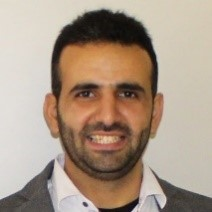Recent Advancements in Embedded Computing
A special issue of Electronics (ISSN 2079-9292). This special issue belongs to the section "Computer Science & Engineering".
Deadline for manuscript submissions: closed (15 February 2024) | Viewed by 2433
Special Issue Editors
Interests: digital hardware implementations; embedded systems; sensors and sensory systems; hardware accelerators; embedded machine learning and neural networks; deep learning
Special Issue Information
Dear Colleagues,
Recent technological advancements in embedded systems have enabled significant improvements in several application domains through the embedding of complex computational algorithms and methods into a unified electronic system. Machine learning (ML) provides powerful and effective methods to process raw data, providing valuable information about the observed phenomenon within complex applications such as computer vision, Internet of Things (IoT), autonomous vehicles, etc. This feature is of particular importance when complex sensory systems are involved, when ML-based approaches are adopted in daily life tasks or embedded into industrial devices enabling various automated and smart capabilities.
In this regard, this Special Issue aims to collect and discuss advances/novel methods and the latest results on embedded computing methods for smart industry, sensors and sensory systems, as well as methods and techniques related to integration in wearable/portable devices for the IoT.
Potential topics include but are not limited to the following:
- Energy-efficient circuits and systems for embedded computing;
- Embedded hardware implementations for machine/deep learning;
- Embedded machine and deep learning architectures on low-power devices (e.g., microcontrollers);
- Hardware-friendly algorithms and electronic systems;
- Methods and techniques for efficient hardware implementations;
- Software/hardware co-design approaches for efficient embedded systems.
Dr. Ali Ibrahim
Dr. Hamoud Younes
Guest Editors
Manuscript Submission Information
Manuscripts should be submitted online at www.mdpi.com by registering and logging in to this website. Once you are registered, click here to go to the submission form. Manuscripts can be submitted until the deadline. All submissions that pass pre-check are peer-reviewed. Accepted papers will be published continuously in the journal (as soon as accepted) and will be listed together on the special issue website. Research articles, review articles as well as short communications are invited. For planned papers, a title and short abstract (about 100 words) can be sent to the Editorial Office for announcement on this website.
Submitted manuscripts should not have been published previously, nor be under consideration for publication elsewhere (except conference proceedings papers). All manuscripts are thoroughly refereed through a single-blind peer-review process. A guide for authors and other relevant information for submission of manuscripts is available on the Instructions for Authors page. Electronics is an international peer-reviewed open access semimonthly journal published by MDPI.
Please visit the Instructions for Authors page before submitting a manuscript. The Article Processing Charge (APC) for publication in this open access journal is 2400 CHF (Swiss Francs). Submitted papers should be well formatted and use good English. Authors may use MDPI's English editing service prior to publication or during author revisions.
Keywords
- embedded electronic systems
- embedded computing
- efficient hardware implementations
- embedded architectures
- hardware friendly algorithms
- embedded machine learning and neural networks






